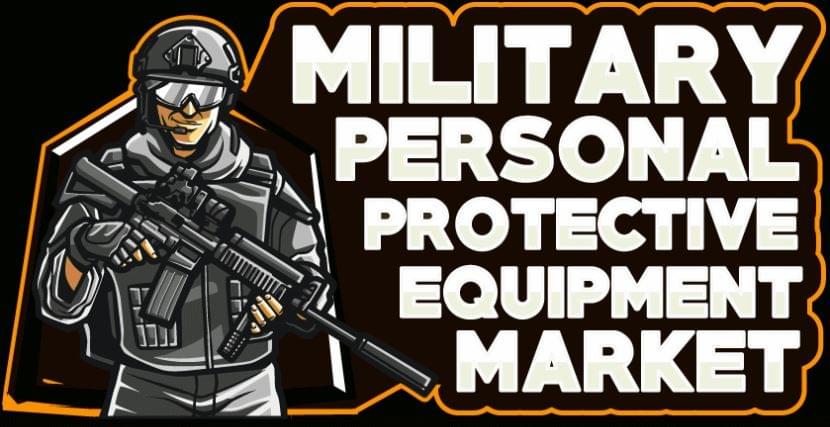The global military personal protective equipment (PPE) market is witnessing rapid growth, fueled by rising defense budgets, geopolitical tensions, and the urgent need to safeguard soldiers in high-risk combat environments. According to Fortune Business Insights™, the market was valued at USD 17.08 billion in 2020, reached USD 17.85 billion in 2021, and is projected to hit USD 32.30 billion by 2028, registering a CAGR of 8.84%.
In 2020, North America led the market with a 29.45% share, supported by robust defense spending and advanced procurement programs. But Asia Pacific is emerging as a strong growth hub, fueled by increasing cross-border conflicts and rising military modernization programs.
Why Military PPE Matters
As modern battlefields grow increasingly unpredictable, soldier protection is no longer optional—it’s a necessity. Lightweight yet powerful gear, such as body armor, combat helmets, and protective eyewear, is becoming central to mission success. For example, Teijin’s Twaron Ultra Micro 550f1000 yarns are designed for fragment-resistant vests, boosting ballistic protection while ensuring mobility.
The demand for such next-generation solutions highlights the balance armies are seeking: maximum protection with minimal weight.

Key Market Drivers
1. Rising Defense Budgets
Global defense spending reached USD 1,981 billion in 2020, with the U.S., U.K., India, China, and Russia accounting for nearly 62% of it. These funds are increasingly being directed toward modern soldier protection systems, strengthening market opportunities.
2. Growing Security Threats
Escalating terrorism, political instability, and border disputes are raising concerns for troop safety worldwide. This urgency is pushing governments to prioritize investments in cutting-edge PPE.
3. Demand for Lightweight Equipment
Traditional protective gear is heavy and limits soldier agility. The shift toward lighter, more flexible PPE is fueling innovation in materials and design.
4. Market Challenges
Despite growth, the sector faces hurdles such as high development costs and occasional equipment malfunctions, which can delay procurement.
Information Source:
https://www.fortunebusinessinsights.com/military-personal-protective-equipment-ppe-market-103131
Market Segmentation
By Product Type Analysis
- Body Armor – Largest Segment in 2020: The body armor segment accounted for the highest share in 2020, driven by strong procurement contracts aimed at enhancing soldier safety. For example, in May 2020, Point Blank Enterprises, Inc. secured an USD 81 million contract from the U.S. Defense Logistics Agency to supply body armor to the U.S. Army, Navy, and Air Force.
- Protective Eyewear – Significant Growth Ahead: The protective eyewear segment is projected to grow considerably during 2021–2028, fueled by rising demand for advanced night vision goggles. In January 2020, Intevac signed a USD 8.1 billion contract with the U.S. Army to provide Delta I fused digital night vision goggles featuring augmented reality (AR) capabilities.
- Pelvic Protection Systems – Moderate Expansion: The pelvic protection systems segment will witness moderate growth due to rising adoption of blast-protective gear for soldiers. In August 2019, KDH Defense Systems, Inc. was awarded a USD 9 million contract to supply pelvic blast protectors to the U.S. Army.
By Application Analysis
- Army – Dominant Segment: The army segment held the largest share of about 57% in 2020 and is expected to continue leading throughout 2021–2028. This dominance is attributed to modernization programs, expanding troop strength, and growing budgets. PPE such as body armor and helmets protect soldiers against shrapnel, IED blasts, and gunfire.
- Air Force – Strong Growth Outlook: The air force segment is anticipated to grow significantly during the forecast period, driven by increasing demand for advanced helmets and protective eyewear for fighter pilots.
- Navy – Moderate Growth: The navy segment is projected to expand at a steady pace as naval forces invest in protective equipment to enhance safety and operational readiness.
Regional Insights
- North America: Leads the global market with strong procurement of eyewear, helmets, and body armor. Presence of key players like 3M, Honeywell, Eagle Industries, and KDH Defense Systems further strengthens the region’s position.
- Asia Pacific: Expected to grow fastest, with China, India, and South Korea heavily investing in defense modernization amidst rising security challenges.
- Europe: Countries such as Russia, Germany, and the U.K. are expanding defense budgets, driving steady market growth.
- Rest of the World: Expected to see moderate expansion as nations increase defense allocations.
Competitive Landscape
Leading companies are racing to integrate AI, biometrics, and wireless sensors into PPE, paving the way for smarter, adaptive soldier gear. Partnerships, contracts, and acquisitions remain core strategies.
- April 2021: Microsoft secured a USD 22 billion contract to supply Integrated Visual Augmentation System (IVAS) goggles to the U.S. Army, enhancing soldiers’ ability to see in low-visibility and combat conditions.
- June 2021: Elbit Systems won a USD 29 million contract to provide AN/AVS-6 Night Vision Imaging Systems for U.S. Army and National Guard aviation units.
Key Players
- 3M (U.S.)
- ArmorSource LLC (U.S.)
- BAE Systems (U.K.)
- Eagle Industries (U.S.)
- Gentex Corporation (U.S.)
- Honeywell International Inc. (U.S.)
- Armor Express (U.S.)
- Point Blank Enterprises Inc. (U.S.)
- Revision Military (U.S.)
No responses yet